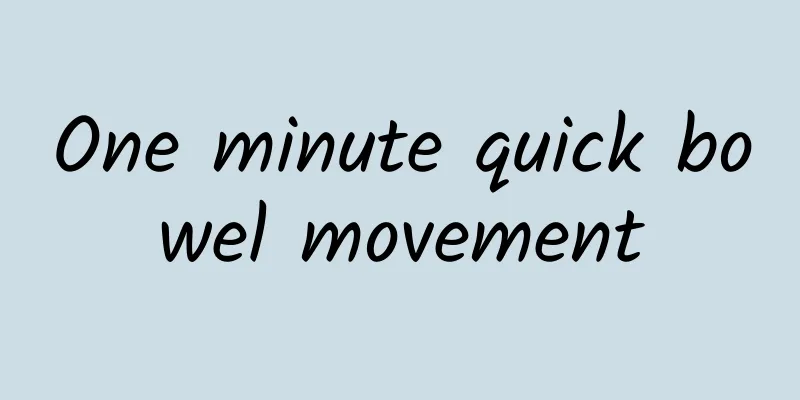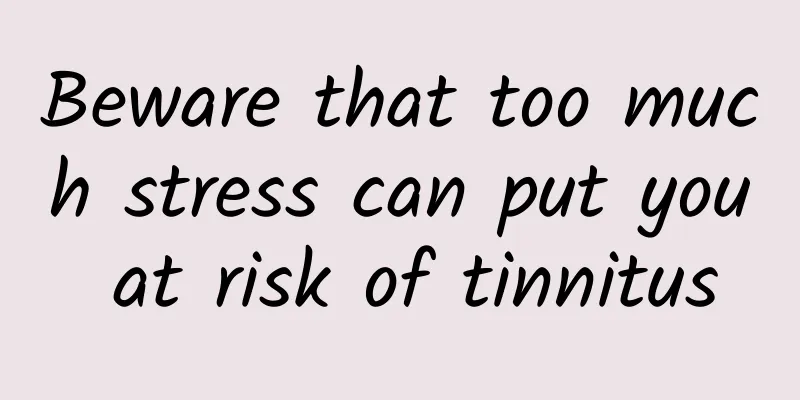Eight acupuncture points for moxibustion

|
Moxibustion is a traditional health care method. Moxibustion therapy is also based on acupoints. It uses moxa or other medicines to burn and warm the acupoints on the body surface to achieve the effects of health care, disease prevention and treatment. Here are some acupoints commonly used for moxibustion health care. 1. Moxibustion on Shenque point Shenque (navel) belongs to the Ren meridian. It is also known as the navel. Moxibustion on the Shenque point has the effects of warming and replenishing the vital energy, strengthening the spleen and stomach, and consolidating the body and recovering from the disease. The Shenque point is usually treated with moxibustion separated by salt or ginger, preferably at noon. It is mostly used for people with weak bodies, and can strengthen the spleen and stomach functions and prevent diseases. Moxibustion on Shenque can also treat diarrhea, bloody stool and constipation after illness. For people with asthenia and after illness, moxibustion on the Shenque point is effective in preventing and treating diarrhea, abdominal pain around the navel, rectal prolapse, stroke, opisthotonos, postpartum urinary retention, chronic diarrhea, skin itching, and urticaria. 2. Moxibustion on Qihai acupoint Qihai belongs to the Ren meridian and is located on the midline of the abdomen, 1.5 inches below the navel. Moxibustion on Qi Hai has the effect of prolonging life and maintaining health. In spring, moxibustion on Qihai and in autumn, moxibustion on Guanyuan for 300 times will cause saliva to be produced in the mouth. Moxibustion on Qi Hai can prevent and treat diabetes and appendicitis. It can be applied for 20 to 30 times. Moxibustion at the Qihai point can prevent and treat lower abdominal pain, constipation, diarrhea, enuresis, spermatorrhea, impotence, spermatorrhea, amenorrhea, metrorrhagia, leucorrhea, uterine prolapse, stroke, abdominal distension and pain, asthma, hernia, insomnia, neurasthenia, enteritis, etc. 3. Moxibustion Guanyuan acupoint Guanyuan belongs to the Ren meridian and is located on the midline of the abdomen, 3 inches below the navel. This point is the "Mu point" of the small intestine, the meeting point of the three Yin meridians of the foot and the Ren meridian, and the place where the body's vital energy is located. Also known as "Dantian". According to traditional Chinese medicine, Guanyuan is the place where true yang resides and where essence and energy are generated. Moxibustion on Guanyuan can make the clear yang rise, the turbid yin descend, the original yang warm, and the blood replenished. It can nourish the kidneys and strengthen the foundation, replenish qi and restore yang, regulate Chong and Ren, and regulate qi and promote blood circulation. Moxibustion on Guanyuan can cure cold accumulation, hernia in men, nocturnal emission and stranguria in women, leucorrhea due to menstruation and childbirth, and all kinds of deficiency and damage. Moxibustion on Guanyuan can also change the amount of oxygen transport in arterial blood, increase the utilization of oxygen, increase the body's compensatory ability, prevent the aggravation of hypoxia and delay the development of shock. Moxibustion on Guanyuan can prevent and treat enuresis, frequent urination, uterine retention, lower abdominal distension and pain, rectal prolapse, hernia, spermatorrhea, leukorrhea, premature ejaculation, irregular menstruation, amenorrhea, dysmenorrhea, metrorrhagia, lochia retention, infertility, stroke, and emaciation due to consumptive disease. 4. Moxibustion on Dazhui point Dazhui point belongs to the Du meridian, between the 7th cervical vertebra and the 1st thoracic vertebra. Dazhui point, also known as Bailao point, is the meeting point of the Du meridian, the three yang meridians of the hands and feet, and the Yangwei meridian. It is known as the "meeting point of all yang" and the "sea of yang meridians." This point has the functions of relieving exterior symptoms, dispersing wind, dispersing cold, warming yang, promoting yang, clearing the heart, calming the mind, strengthening the brain, eliminating fatigue, enhancing physical fitness, and strengthening the whole body. Modern research has found that moxibustion at the Dazhui point can increase the number of lymphocytes, improve the conversion rate of lymphocytes and the rate of E-rosette formation, and has the function of improving the body's cellular immunity. Moxibustion at this point can be used to treat chills in the neck and back of the elderly, fatigue, headache, dizziness caused by excessive use of the brain, stiff neck caused by excessive bending over a desk or bowing the head, cervical spondylosis, and vascular tension headaches. The Dazhui point also has a significant antipyretic effect. Moxibustion at the Dazhui point can prevent and treat upper respiratory tract infections such as colds, bronchitis, and pneumonia. It can also be used to prevent and treat emphysema and asthma. 5. Moxibustion on Zhongwan acupoint Zhongwan acupoint belongs to the Ren meridian and is located on the midline of the abdomen, 4 inches above the navel. Zhongwan acupoint has the functions of regulating the stomach and replenishing Qi, eliminating dampness and harmonizing the middle, and relieving nausea and vomiting. Moxibustion on the Zhongwan point can enhance gastric peristalsis, immediately open the pylorus, slightly raise the lower edge of the stomach, deepen the folds of the jejunal mucosa, and enhance intestinal motility. Moxibustion in Zhongyuan is beneficial to improving the function of the spleen and stomach, promoting digestion and absorption, and enhancing human resistance. It has a good effect on epigastric distension and pain, vomiting, nausea, acid regurgitation, and loss of appetite. 6. Moxibustion on Shenzhu Point Shenzhu point belongs to the Du meridian and is located between the third and fourth thoracic vertebrae behind the neck. The body pillar has the effects of regulating lung qi, replenishing deficiency, detoxifying and calming the mind. Moxibustion on the body column can warm and replenish the Yuan Yang, harmonize Qi and blood, and promote the growth and development of adolescents. Modern research believes that moxibustion on the body column can regulate the human nervous system, prevent neurasthenia, insomnia, and headaches, prevent fatigue, and promote the recovery of physical strength. Moxibustion on the body column has a preventive and therapeutic effect on children's gastrointestinal diseases, such as indigestion, vomiting, diarrhea, and loss of appetite. In addition, it has preventive and therapeutic effects on mental depression, night crying, respiratory system asthma, bronchitis, whooping cough, colds, pneumonia, etc. "Yangsheng Yiyancao" states: If children are treated with moxibustion on Shenzhu and Tianshu every month, they will be kept healthy. 7. Moxibustion on Sanyinjiao acupoint Sanyinjiao belongs to the spleen meridian of foot Taiyin, located on the inner side of the calf, 3 inches above the highest point of the medial malleolus, on the inner posterior edge of the tibia. Sanyinjiao is the meeting point of the three yin meridians of the foot (spleen meridian, kidney meridian, and liver meridian). It has a preventive and therapeutic effect on diseases of the liver, spleen, and kidney. It has the functions of strengthening the spleen and stomach, eliminating dampness, soothing the liver and benefiting the kidneys, regulating menstrual blood, and controlling reproduction. Modern medicine believes that moxibustion at Sanyinjiao can prevent and treat increased nocturia, difficulty urinating, cystitis, acute and chronic nephritis, orchitis, spermatorrhea, enuresis, irregular menstruation, amenorrhea, metrorrhagia, and postpartum fainting. Moxibustion at Sanyinjiao has preventive and therapeutic effects on insomnia, neurasthenia, palpitations of the nervous system, coronary heart disease and hypertension of the cardiovascular and cerebrovascular systems, and spleen and stomach weakness, intestinal rumbling, abdominal distension, diarrhea, indigestion, abdominal pain, bloody stools, and constipation of the digestive system. 8. Moxibustion on Zusanli acupoint Zusanli belongs to the Stomach Meridian of Foot-Yangming. It is located on the anterior and lateral side of the lower leg, 3 inches below the calf nose and one horizontal finger away from the anterior edge of the tibia. Zusanli is the main acupuncture point of the stomach meridian. It has the functions of regulating the spleen and stomach, strengthening spleen yang, warming the middle and dispersing cold, tonifying the middle and replenishing qi, harmonizing qi and blood, promoting the flow of qi, guiding qi downward, and replenishing deficiency and strengthening the body. Modern research shows that moxibustion on the Zusanli acupoint can regulate the central nervous system of patients with early-stage hypertension, lower blood pressure, reduce fibrin degradation products, improve blood viscosity, dilate blood vessels, and reduce blood coagulation, thus preventing the occurrence of cerebrovascular accidents. Moxibustion on Zusanli can also enhance digestion and absorption, improve copper and zinc metabolism, and reduce the occurrence of arteriosclerosis and coronary heart disease. Moxibustion at Zusanli can prevent and treat gastrointestinal dysfunction, loss of appetite, malabsorption, acute and chronic gastritis, oral and gastric ulcers, gastric ptosis, diarrhea, and constipation in the digestive system; hypertension, hypotension, atherosclerosis, coronary heart disease, angina pectoris, cerebrovascular accident in the cardiovascular system; colds and tuberculosis in the respiratory system; and frequent urination, enuresis, urinary obstruction, spermatorrhea, and premature ejaculation in the urogenital system. Moxibustion on Zusanli can also enhance physical strength, relieve fatigue, regulate nerves, and have a strong anti-aging effect. It is an important method of health care. |
<<: Diet therapy to relieve dryness and resolve the four internal fires
>>: A man's dragon vein is a woman's phoenix bone!
Recommend
Episiotomy scar hard
Maybe everyone knows that when choosing a caesare...
The difference between spleen and stomach yin deficiency and yang deficiency
We are actually not unfamiliar with the terms yin...
What are blackheads and fat particles squeezed out?
Blackheads are quite common in our daily life and...
What causes anal leakage?
Anal fistula is a disease in the anal area of t...
What is sepsis
We may have heard of sepsis in our daily lives. T...
How to avoid braces face?
People often talk about braces face. In fact, bra...
The efficacy and function of licorice root
Licorice is a herb with certain medicinal value. ...
Does eating durian help pregnant women to have a healthy baby?
It is very beneficial for pregnant women to eat s...
Best treatment for snakebite
If you have herpes zoster, you must seek timely t...
Is circumcision painful?
Many male friends undergo circumcision surgery fo...
Psychological Trauma and Recovery
Nowadays, more and more people are suffering from...
What are the effects of seven-leaf flower
Seven-leaf Aster is a traditional Chinese medicin...
Early symptoms of head tumors
Head tumor is also a relatively common disease. B...
Do spider veins itch?
The medical explanation for spider nevus is a dil...
How to tell if you have asthma
Hormones are the most effective drugs for control...









